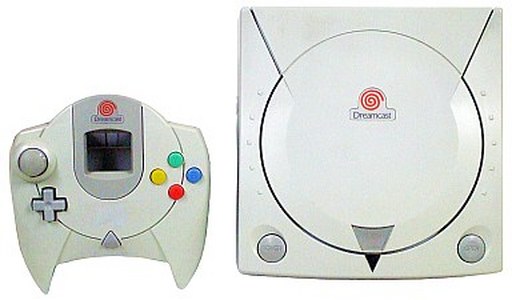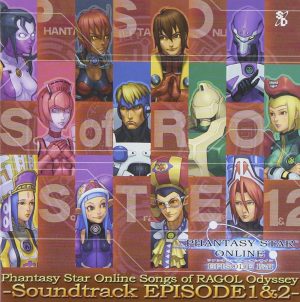
To many North American gamers, they recognize 9/9/99 as the launch of the Sega Dreamcast, Sega’s final home console. Prior to the North American launch, it launched in Japan on November 27, 1998. While the Japanese launch wasn’t as successful as North America’s, it still had a longer lifespan, when it was discontinued in the West by the end of winter 2002. As for Japan, the console was still officially getting games half way into the decade (however, independent developers to this day still make and release games for the Dreamcast, but that’s another article for another time). Despite its short stay and impact, it still continues to be remembered even 20 years later!
About the Dreamcast
What Dreamcast is notably remembered for is how it was one of the first consoles to include a (56k) modem (33.6k in Japan). Upon its release, mainstream broadband internet was still in its infancy, and 56k was still considered the best way to go. Through the internet service, Sonic Adventure players could enjoy special Dreamcast launch editions to the city. Fans could also enjoy online play through Quake, Chu Chu Rocket, and helped kickstart Phantasy Star Online. If you thought browsing on the internet with a Dreamcast controller was inconvenient, thankfully, you could get a keyboard and mouse and enjoy some novelty games with it, most notably Typing of the Dead, a typing version to to House of the Dead 2. As broadband became the norm, Sega released a broadband modem for the Dreamcast, which you have to purchase separately.
In addition to its modem and keyboard, it had many fun peripherals. Of course, it had controllers that were common then, which are still common to this day. Dreamcast had many arcade racers so if you wanted to play with a steering wheel, you had the option to play with one. If you wanted to enjoy House of the Dead 2 with a light gun, you also had that option (however, Sega’s official light gun for the Dreamcast was never released outside of Japan, but 3rd party ones were still available in North America). With all of its arcade fighters, hell, you’ll love the arcade stick you could get for it since many fighting game fans didn’t think the controller was suitable for the genre. Beyond such controllers, players could also buy a special dual stick controller for Virtual On, a fishing controller for Sega Bass Fishing, and a microphone for Seaman.
Innovation
Though all present day consoles are HDMI compatible upon the uploading of this article, Dreamcast was also ahead of the curve by having VGA support. Many computer monitors up until mid-way to the 2000s were all VGA supported and if you wanted to enjoy your Dreamcast games on a PC monitor for better visual quality (480p), you could purchase an official Dreamcast VGA cord! Though some present day TVs and monitors still have VGA support, when you hook up your VGA cord to an HDTV, or use a VGA/HDMI converter, you’ll be surprised to see how much its library holds up (which we’ll get into later) graphically, most notably with Shenmue and Jet Set Radio.
Playing with the Dreamcast
Another reason why people still love the Dreamcast is how it was one of the first consoles to truly bring the arcade home. Up until the end of the 1990s, if gamers wanted the best gaming experience in terms of presentation, graphics, and sound, they had to go to the arcade to enjoy that. However, during the period of the Dreamcast’s release, the arcade was progressively starting to die in the US, and Dreamcast was one of those consoles that had arcade perfect ports, or surpassed them. Yes, the consoles between the 8-bit and 32/64-bit era all had home ports of arcade releases but never really 100% lived up to them in both graphics and sound.
Thanks to Sega’s NAOMI arcade hardware, which shared common qualities with Dreamcast, they were practically one and the same such as Powerstone, Capcom Vs SNK, Virtua Tennis, Crazy Taxi and so on. However, one notable game we’d like to share is Soul Calibur. When you compare the original arcade game and the Dreamcast release, you’ll be surprised how the Dreamcast version is far superior. In addition, Sega’s VMU was quite a novelty in Japan for both home and the arcade. For the Japanese version to Marvel Vs. Capcom 2, you need to use your VMU in arcade versions in Japan in order to unlock certain characters for the Japanese Dreamcast release. Also, if you still enjoy the first Marvel Vs. Capcom game, forget the PS1 version which is a joke compared to the Dreamcast (which has tag team play and quick load times).
Final Thoughts

And this transitions to why hardcore gamers still remember the Dreamcast after 20 years, and is that it has a large library of games that still holds up to this day. Yes, they have been ported to other consoles, but the Dreamcast is where they originated and some gamers feel they are best played on Dreamcast such as both Powerstone games (which were ported to PSP), Virtua Tennis, and Phantasy Star Online. A lot of that is thanks to the VGA support. And there are other great titles that haven’t been ported to other consoles such as Dynamite Deka II, Gunspike, Zombie’s Revenge, and Godzilla Generations. Dreamcast may have been Sega’s final console, but it is remembered for going out in a blaze of glory with all of its unique games. In a world where there’s a Call of Duty game once every six months, it’s nice to go back to a time when people tried different things, and that’s why Dreamcast’s games were and still are fun.
Recommended Post
Top 10 Dreamcast Games [Best Recommendations]
Recommended Post
Top 10 Dreamcast OSTs [Best Recommendations]
Recommended Post


